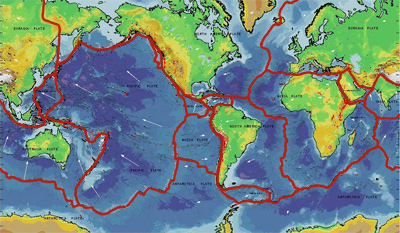Click on image for full size
Image Courtesy of the National Science Foundation
Scientists to Investigate Role of Equatorial Pacific Ocean in Global Climate System
News story originally written on February 23, 2009
An international team of scientists is currently studying the equatorial Pacific Ocean, and a second expedition will happen in May 2009. They are part of a science program called the Pacific Equatorial Age Transect (PEAT). While aboard the JOIDES Resolution, the scientists will be drilling into the crust of the Pacific tectonic plate along the equator in order to gather sediments from the ocean floor that can give them a record of the Cenozoic Era (from 65.5 million years ago to the present).
The scientists believe the results they get from their research will give them a clearer understanding of the Earth's past climate, which is vital to knowing what the climate will be in the future.
The equatorial Pacific is a complex region that impacts the Earth's climate in many ways. This region is affected by solar warming and is one of the main regions where carbon dioxide transfers from the deep ocean to the atmosphere. The equatorial Pacific is also where the El Niño-Southern Oscillation begins.
Over the last 55 million years, global climate has varied dramatically from extreme warmth to glacial cold. These climate variations have been recorded in the ocean sediments on the ocean floor of the equatorial Pacific. Information from these expeditions will help scientists understand how Earth was able to maintain very warm climates relative to the 20th century, even though solar radiation received at the Earth's surface has remained nearly constant for the last 55 million years.















